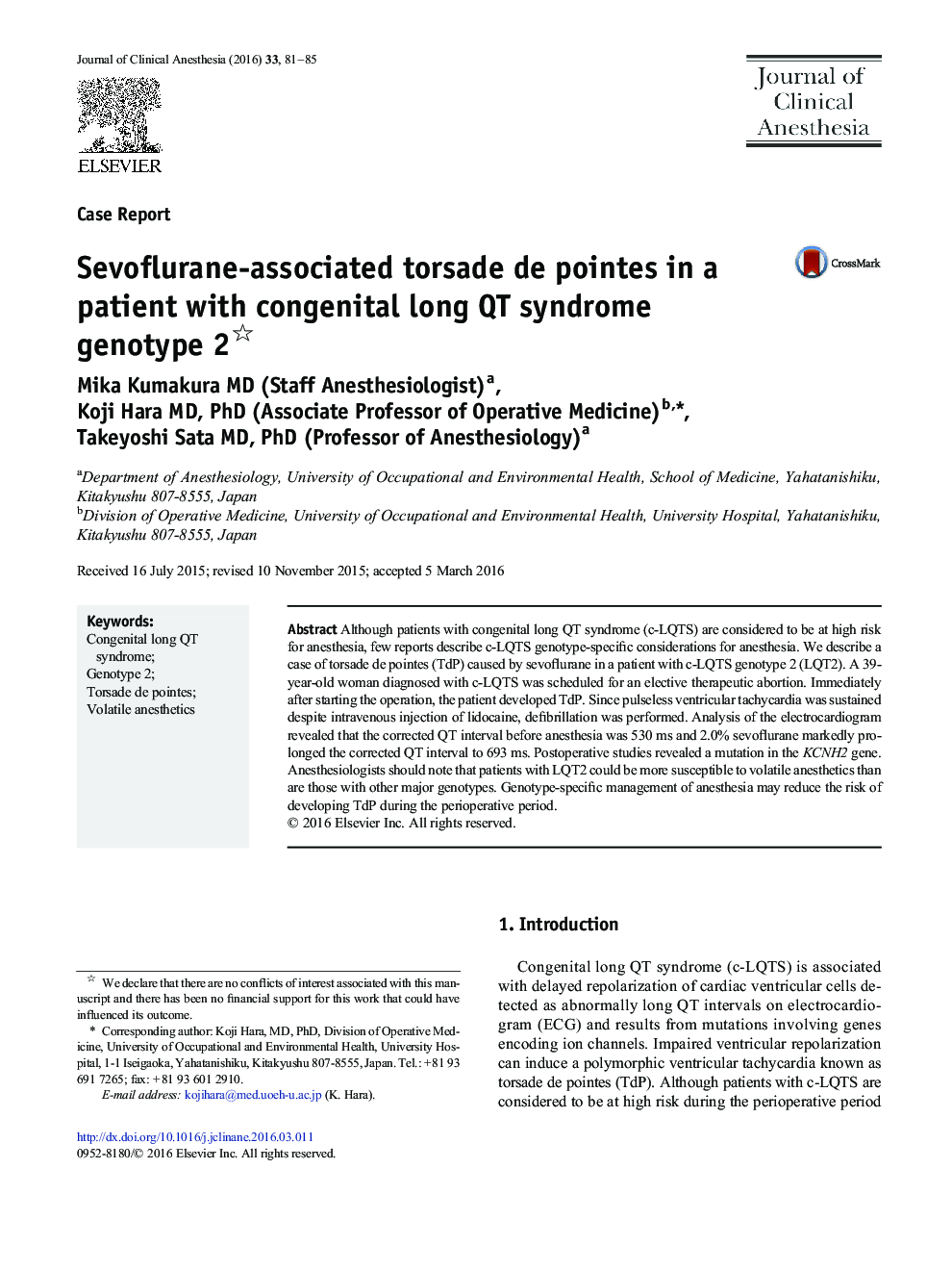| Article ID | Journal | Published Year | Pages | File Type |
|---|---|---|---|---|
| 2762140 | Journal of Clinical Anesthesia | 2016 | 5 Pages |
•Patients with congenital long QT syndrome are at high risk for anesthesia.•Few reports describe the long QT syndrome genotype-specific management of anesthesia.•The long QT syndrome genotype 2 would be very susceptible to volatile anesthetics.•Genotype-specific management may reduce the risk for developing torsade de pointes.
Although patients with congenital long QT syndrome (c-LQTS) are considered to be at high risk for anesthesia, few reports describe c-LQTS genotype-specific considerations for anesthesia. We describe a case of torsade de pointes (TdP) caused by sevoflurane in a patient with c-LQTS genotype 2 (LQT2). A 39-year-old woman diagnosed with c-LQTS was scheduled for an elective therapeutic abortion. Immediately after starting the operation, the patient developed TdP. Since pulseless ventricular tachycardia was sustained despite intravenous injection of lidocaine, defibrillation was performed. Analysis of the electrocardiogram revealed that the corrected QT interval before anesthesia was 530 ms and 2.0% sevoflurane markedly prolonged the corrected QT interval to 693 ms. Postoperative studies revealed a mutation in the KCNH2 gene. Anesthesiologists should note that patients with LQT2 could be more susceptible to volatile anesthetics than are those with other major genotypes. Genotype-specific management of anesthesia may reduce the risk of developing TdP during the perioperative period.
